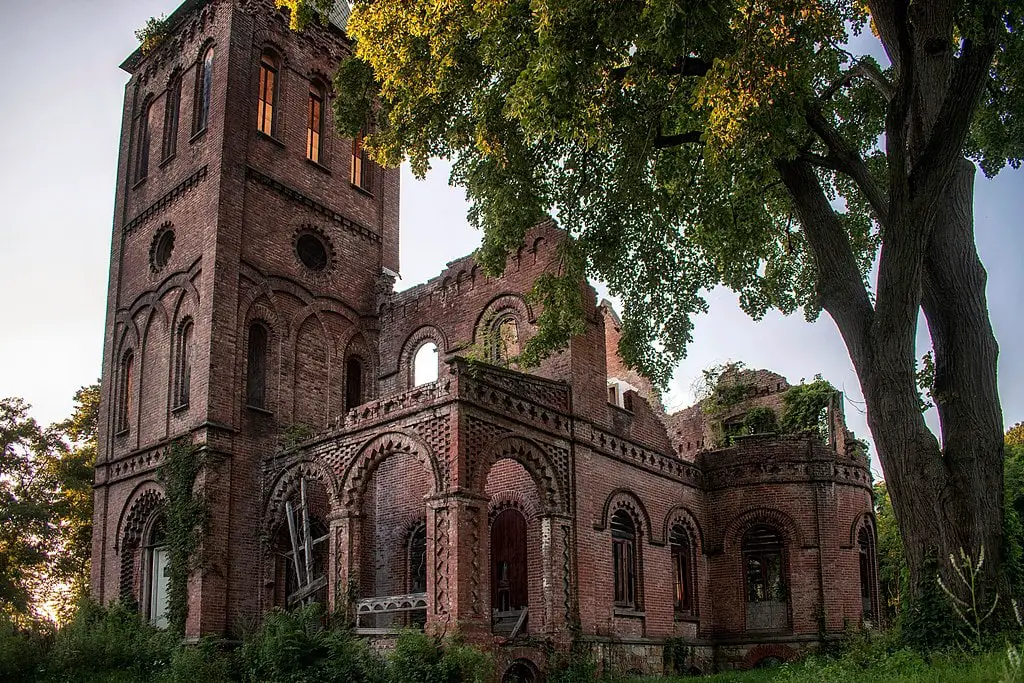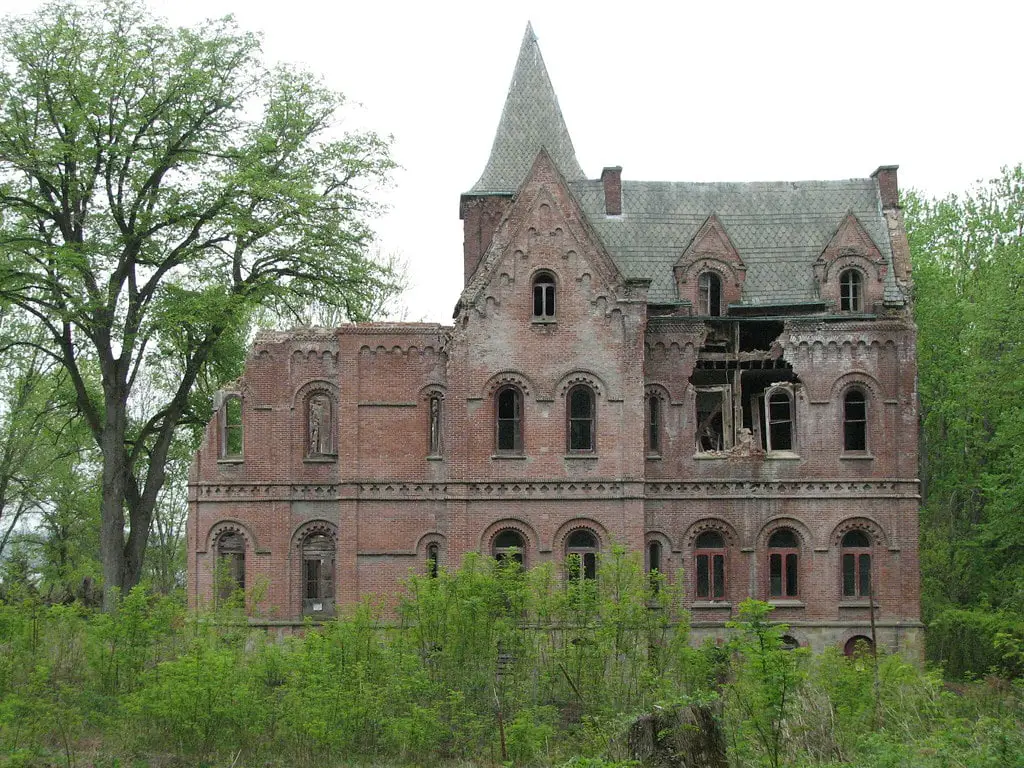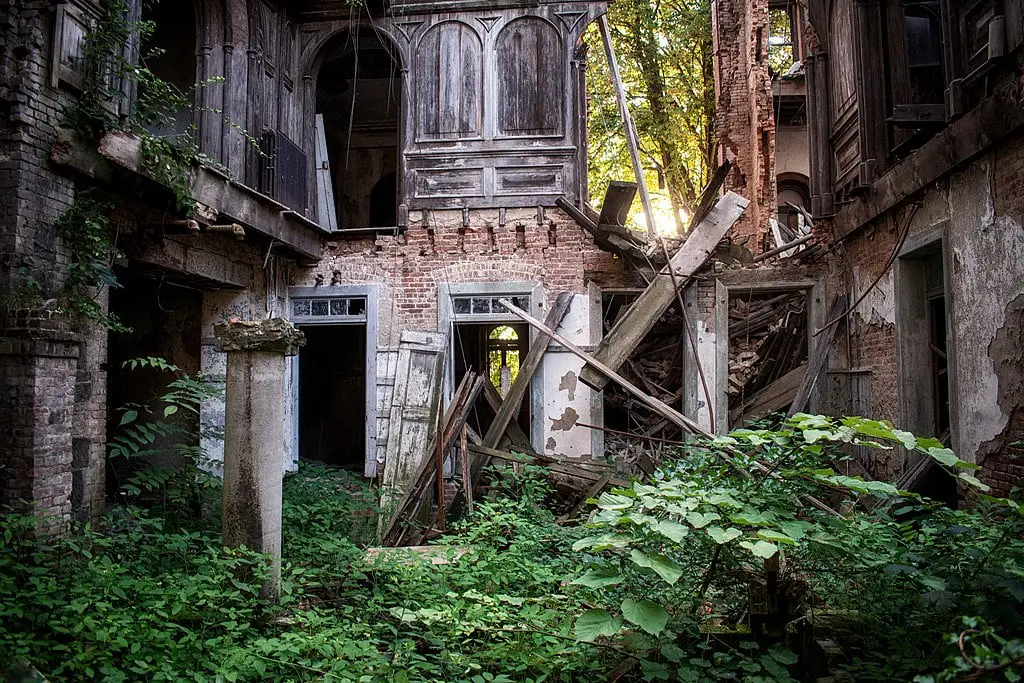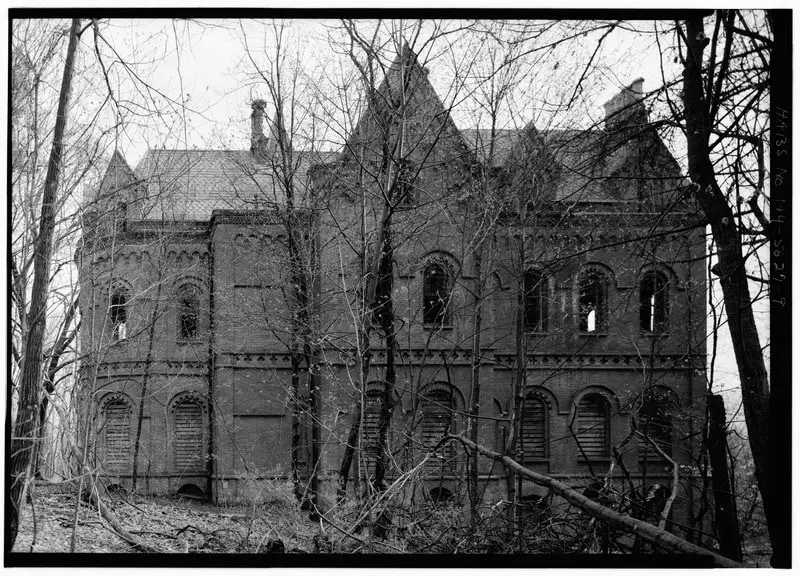The Architectural Marvel
Wyndcliffe Mansion, initially constructed in 1853, is a testament to the Norman architectural style. Designed by local architect George Veitch, the mansion's intricate brickwork was executed by master mason John Byrd. The bricks, rectangular and a few molded, were arranged in highly varied patterns, creating an ornamental masterpiece that still captures the imagination.
The mansion's architectural significance extends beyond its walls. It is part of the Hudson River Historic District and has been designated as a U.S. National Historic Landmark District. These designations underscore the mansion's importance as a standalone structure and part of a larger historical and architectural landscape.
For those interested in architecture, Wyndcliffe offers a glimpse into the past, showcasing design elements seldom seen in modern construction. The mansion's ornamental brickwork, in particular, is a rare art form.
A virtual tour of the site - though currently in ruins - can be an educational experience. It's a chance to appreciate the craftsmanship of a bygone era and to understand the architectural norms of the 1850s.
The Socialite and the Mansion
Elizabeth Schermerhorn Jones, a New York City socialite, was the original owner of Wyndcliffe Mansion. She had the mansion built as her weekend and summer residence, a place where she could escape the hustle and bustle of city life. Her influence in high society was significant, and the mansion reflected her social standing.
Jones was not the only notable figure associated with Wyndcliffe. Her niece, writer Edith Wharton, was a frequent visitor to the mansion during her childhood. Wharton's visits to her aunt's estate were so impactful that they even found a mention in her autobiography, "A Backward Glance."
The mansion served as a social hub for Jones and her high-society friends. It was a place of gatherings, parties, and social events, making it a focal point in the social landscape of the time. The mansion was not just a home but a statement of elegance and social standing.

Elizabeth Schermerhorn Jones passed away in 1876, but her legacy lived through the mansion. Her influence was so significant that it is believed the phrase "keeping up with the Joneses" originated from her and her wealthy estate.
The Evolution of Ownership
In 1886, the Wyndcliffe mansion underwent its first significant change in ownership. The executors of Elizabeth S. Jones sold the property to Andrew Finck for $25,000. Finck was a New York City brewer, and the mansion subsequently became known as Linden Hall or Finck Castle.
Andrew Finck's family substantially impacted New York City's brewing industry. Their brewery, A. Finck & Son's Brewery, operated from 1870 to 1911 and was one of the largest breweries in the city. Under the Finck family's ownership, the mansion underwent several changes but retained its grandeur.
The mansion transitioned from Andrew to his son, August, in 1901 and subsequently to his grandson, August Jr. The estate and its surrounding property underwent several transitions, including changes in names and purposes, but its architectural essence remained intact.
The Finck family's ownership ended when Theodore Finck died in 1923. In 1927, the estate, along with its 31.8 acres, was acquired by Nissan S. Hanoka, Rebecca Hanoka, and Mrs. Victori Hazen for an initial sum of $100 and an additional mortgage of $5,000. From then on, the mansion passed through several hands, each leaving its mark on this historic structure.
The Wyndcliffe Mansion's Decline
Wyndcliffe Mansion was abandoned around 1950, marking the beginning of its decline. Over the years, the property shrank from its original 80 acres to a mere 2.5 acres. The mansion started showing signs of deterioration, with significant sections collapsing over time.

The mansion's decline was not just physical but also cultural. Once a symbol of luxury and high society, it became a relic of the past, its grandeur fading each year. The property, which once had waterfront access to the Hudson River, was reduced to a fraction of its original size.
Despite its dilapidated state, the mansion continued to attract attention. Photographers, historians, and residents visited the site, captivated by its beauty and historical significance. The estate, even in its decline, remained a subject of fascination.
The mansion's state as of 2023 is a poignant reminder of the passage of time. While efforts have been made to preserve what remains, the estate stands as a shadow of its former self, inviting us to ponder the impermanence of material grandeur.

Recent Developments and Future Prospects
In September 2016, the mansion was sold at auction for $120,000. A year later, it was purchased by a Manhattan-based developer, John Barboni, and his brother, Mark Barboni. They submitted an emergency stabilization plan to the Rhinebeck Planning Board in September 2022 to restore the mansion.
The Barbonis have retained Andrew B. Renfroe, a professional engineer with Blue Sky Design, Inc., as the structural engineer for the project. The town of Rhinebeck is currently reviewing the application, and if approved, this could mark the beginning of a new chapter for Wyndcliffe Mansion.
The mansion's future remains uncertain, but there is a glimmer of hope. The Barbonis are waiting for the town to complete their review and, hopefully, approve the required stabilization permit. The mansion could again symbolize architectural brilliance and historical significance if all goes well.
While the mansion's fate hangs in the balance, the community watches with bated breath. The restoration of Wyndcliffe Mansion could serve as a significant cultural revival, not just for Rhinebeck but for architectural and historical enthusiasts everywhere.

The Cultural Impact of Wyndcliffe Mansion
Wyndcliffe Mansion has had a lasting impact on American culture. The phrase "keeping up with the Joneses" is thought to have originated from the estate, highlighting its influence beyond architecture and high society. The mansion symbolized luxury, inspiring a culture of affluence and social competition.
Wyndcliffe's influence extended to the Hudson Valley elite, inspiring a trend of building large, wealthy country homes. The mansion set a standard for grandeur, becoming a benchmark for architectural and social aspirations.
In modern times, the mansion is a poignant reminder of a bygone era. While its physical structure may decline, its cultural and historical significance remains intact. Wyndcliffe Mansion continues to captivate the imagination as a subject of study, photography, and community discussions.
